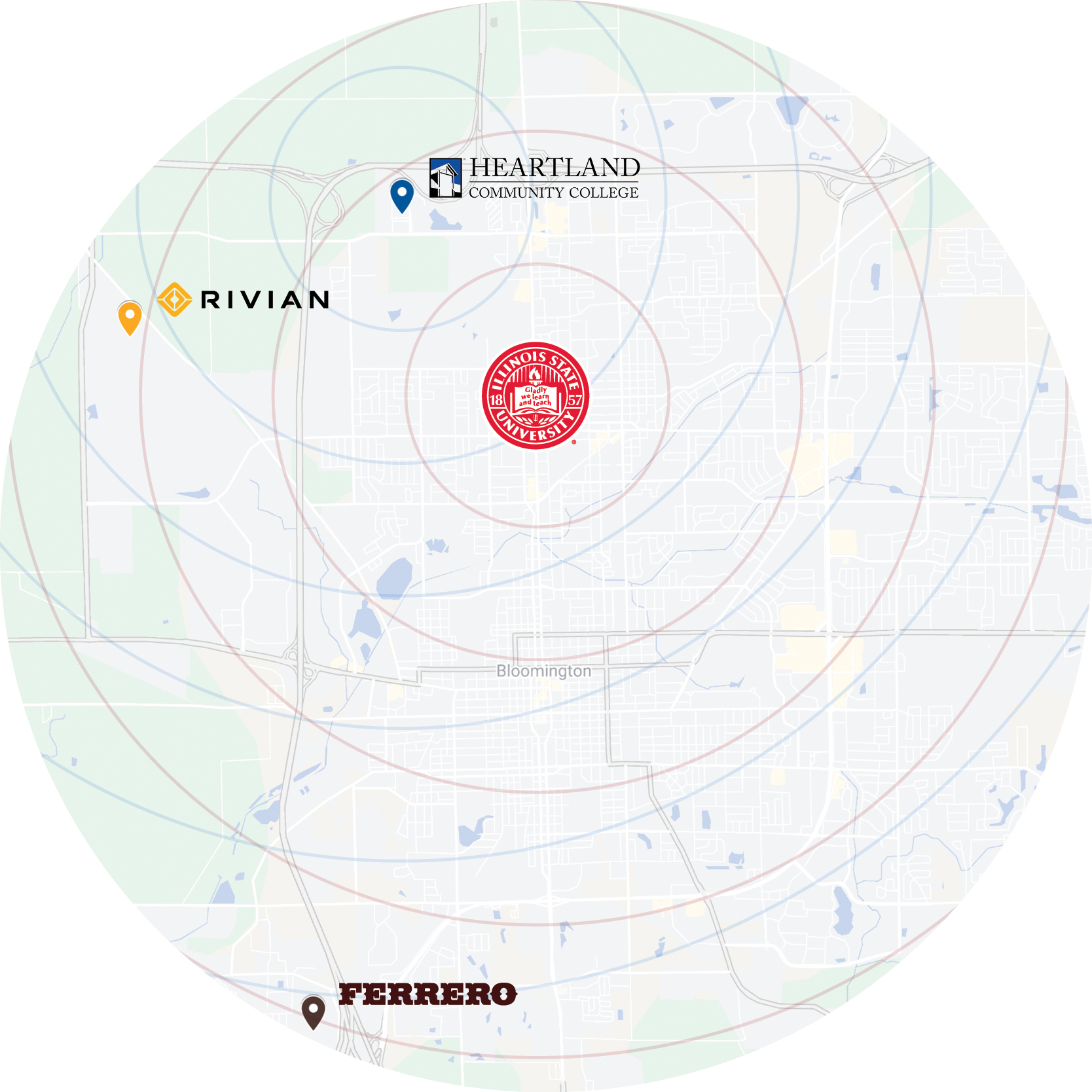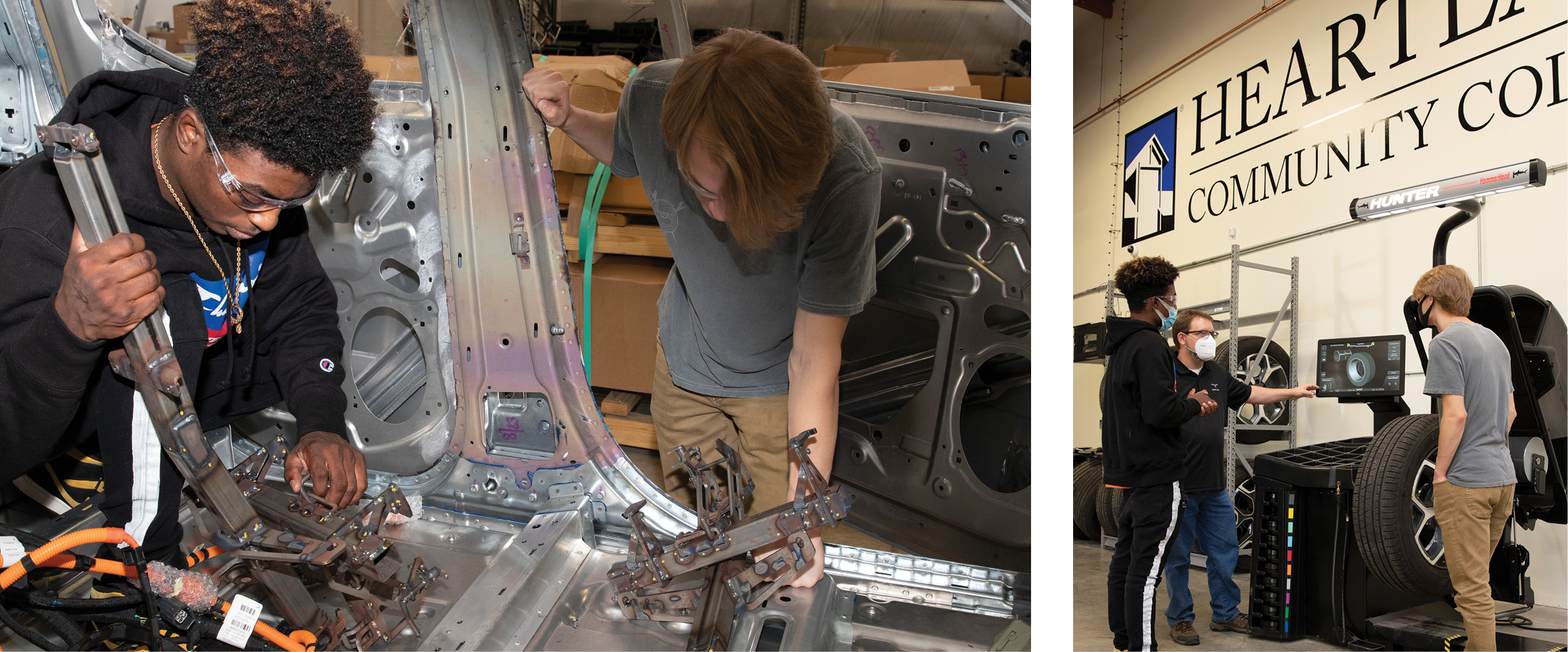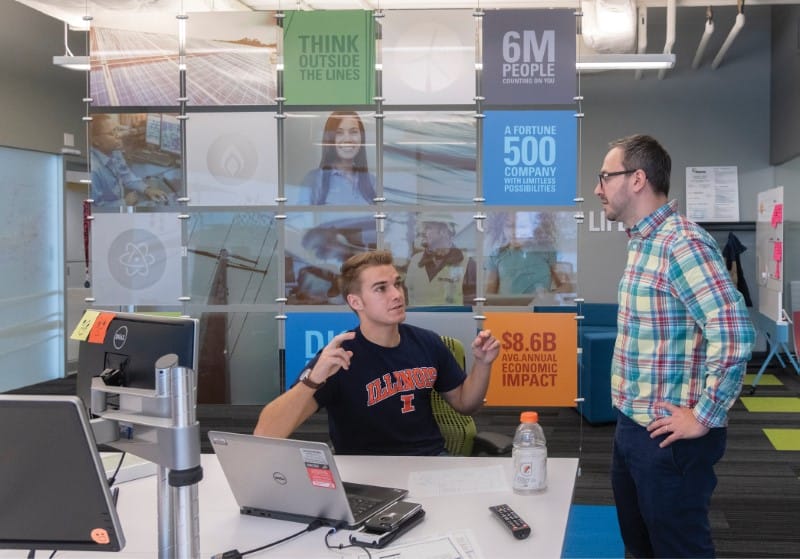Traditional approaches to learning are giving way to innovation at Illinois’ higher education institutions.
Over a decade, students seeking degrees in STEM rose from 24% to 27% in 2019. In 2021, 678,833 students enrolled for the fall semester across all Illinois institutions. Of that, 26,040 enrolled in engineering programs across the state, according to the Illinois Board of Higher Education data. As employer demand for qualified engineers rises, it’s clear there is room to grow. Institutions like Illinois State University and Heartland Community College in Normal are building programs that recruit diverse talent and produce skilled graduates equipped to enter the workforce.
Focused on Equity
Illinois State University in Normal proposed a new engineering program in 2016. The implementation of the new college was approved in May 2022 by the Illinois State University Board of Trustees. The new college will have two departments in electrical and mechanical engineering. The goal is to have 130 students enrolled to kick off its opening in 2025, rising to 520 students by 2029. Three degrees will be available to students: general, electrical and mechanical engineering.
“We expect that the students will develop confidence, integrity, high professional and personal ethical standards, and a forward-looking global perspective that is accepting and inclusive of diversity,” said Illinois State University Vice President of Academic Affairs and Provost, Dr. Aondover Tarhule.

Rivian and Ferrero, two of the state’s major employers, are both within seven miles of Illinois State University and Heartland Community College.
Map courtesy Google Maps
ISU is reaching out to underserved students and women to produce a more diverse workforce within STEM fields. Nationally, nearly 80% of engineering students are male, whereas more than 60% of the general undergraduate student body is female. In terms of race and ethnicity, the representation of Black, Latinx, Native American and other demographics is in the single digits. “The Engineering College at Illinois State is designed intentionally with an equity lens to ensure that we do better than those national statistics,” Tarhule said.
To change those numbers, ISU will implement practices such as collaborative work environments, institutional leadership engagement, networking, pipeline programs and targeted experiential learning, while also seeing that engineering students graduate at or above the 68% university graduation rate. “National statistics show that nearly 50% of students who begin an engineering degree never finish it. Our goal is to ensure that the students in the new engineering college complete at the same rate as the general student body,” Tarhule said. “We hope to do this by developing or adapting proven student success practices from around the country, essentially 360-degree wraparound support infrastructure including scholarships.”
Aiming to unbind from legacy practices, ISU will create a curriculum designed with the 21st century in mind, Tarhule said. A program designed through an equity lens will push the university to recruit higher numbers of international students, women and racial minorities looking to pursue an engineering degree, offering scholarships, financial support and mentorship, if needed, to retain these individuals until their graduation.
Workforce Readiness
Hands-on experience is extremely valuable when paired with working education. Illinois institutions and local companies understand both the need and merit of graduates retaining skills they’ve learned in and out of the classroom. Additionally, the understanding that industries are evolving leads institutions, like ISU Normal and HCC, to adjust alongside new innovations, adding or updating engineering courses and programs to meet employer demands and prepare students for the future.

Heartland Community College engineering students get hands-on experience in class (left) while an HCC professor speaks with engineering students.
Photos courtesy Heartland Community College
“We get it here in Illinois. We’re breaking down all the necessary barriers to make sure that we are preparing the workforce that would be needed for their businesses, not only for the immediate, but for the long-term as well,” said Heartland Community College President Keith Cornille. “The community colleges throughout the state are committed to doing that, whether it’s here in central Illinois or down in the southern part of the state. We’re all working together in order to make sure that we have that trained workforce.”
Heartland Community College is a two-year college with roughly 4,000 students, 80% of whom are in a transfer track program to go on to a four-year university, such as ISU, to continue their field of study. Working closely with employers and other state universities allows Heartland to align course curriculum to meet their needs, so that students are equipped with apt knowledge as they move into the workforce or further their education.
To ensure that graduates don’t meet a dead-end job searching, Heartland works to provide necessary credentials to build upon their existing knowledge. Cornille notes that the school is committed to being responsive to industry needs. That commitment gives further opportunity for businesses to utilize updated curriculum, as current employees can take a relevant course at Heartland in order to upskill, instead of going through a full program.
Rivian Automotive and Ferrero North America are examples of local companies providing resources for universities and community colleges to build a highly skilled workforce. Both companies have apprenticeship programs through Heartland, laying a foundation for students to make money while they learn. In the past couple years, the college has created 33 new work-ready programs, 12 of which are specifically designed for businesses. The program consists of stackable, short-term credentials to educate the workforce needed today and in the future.
“We’re very fortunate here at Heartland that we have that strong relationship with ISU and with businesses like Rivian. I can’t stress enough that those relationships are throughout the entire state. The community colleges have always had a strong history of working with businesses and industries in order to meet their workforce needs. But now, we’re doing it in an even more collaborative way than we ever have before,” said Cornille.
As ISU prepares to open their engineering program, Tarhule says talent retainment is an important element of building a strong workforce in the state. Noting that students tend to accept jobs within their college community, but they must be excited about engaging with local companies. “We aim to produce engineers who are workforce ready,” he said. “That is, our students will be able to walk out of the classroom and into a job in their field and perform competently. We will do this by intentionally infusing hands-on learning experiences, internship and externship opportunities, and strong industry partnerships.”

